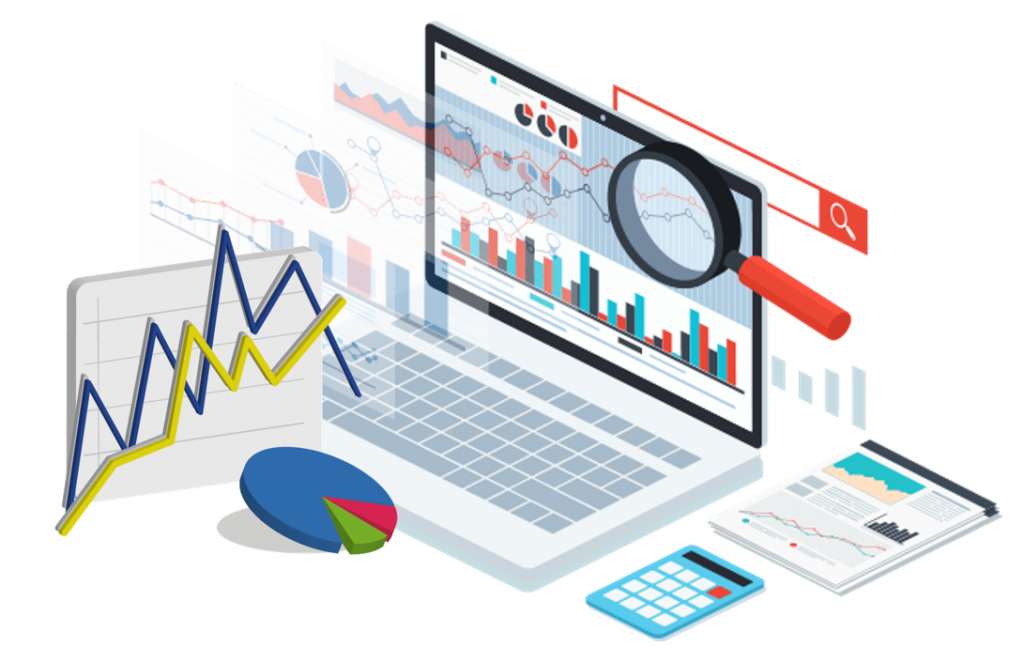How to do financial market analysis? It’s not just a skill; it’s the compass that guides smart investing. As the backbone of making informed decisions, understanding the nuts and bolts of market analysis is critical. Think of it as your toolkit for unlocking the potential of your investments. From grasping the essentials to leveraging economic signals, I’ll walk you through the steps to build a solid base. Then, we’ll dive into techniques to read the market’s moves like an open book. With these skills, you’ll interpret data that shapes winning strategies and harness advanced tools that separate novices from the pros. Get ready to master the essentials of financial market analysis and sharpen your investing acumen.
Understanding the Foundations of Financial Market Analysis
Grasping the Fundamentals
Let’s start with the basics. Financial market analysis is like a toolbox. It’s filled with different tools (techniques) that help us make smart money moves. You wouldn’t fix a leak with a hammer, right? It’s the same with investing. You need the right tools for the job.
One of the first tools is technical analysis. It’s all about charts and trends. Think of it as tracking footprints. They show where the market has been. Things like moving averages and candlestick patterns are clues. They help guess where the market might go next.
Now, let’s talk about fundamental analysis. It’s a bit like being a detective. You dig into a company’s financial health. You look at profits, debts, and how they manage money. It helps decide if a stock is a good buy.
Financial market indicators are your hints. They are like signals that light up to say “watch out” or “go for it.” These could be numbers like job rates or sales figures. They tell us about the big picture—where the economy heads.
Leveraging Key Economic Indicators
Economic indicators are like weather forecasts for money. They help us see what might come in the market. Think of it as checking the sky before a picnic. If clouds roll in, maybe it’s not the best day for it.
Evaluating economic data is a key skill. It means looking at reports and numbers to make sense of them. For example, if more people are buying houses, it could mean they feel good about their money. This can affect different kinds of investments.
Now, here are some words you might see in financial news: GDP, inflation, and interest rates. GDP is like a scorecard for the whole country’s economy. Inflation tells us if things get more expensive. Interest rates are like the price of borrowing money. They all tie together and impact your investing choices.
Understanding market sentiment is just about feelings. It’s about how people feel about the market. Are they scared, hopeful, or unsure? You’ve got to learn reading this mood. It can change stock prices as fast as a snap.
Risk assessment is like looking both ways before crossing the street. It means checking how much you could lose and deciding if it’s worth it. This step is super important. It keeps your money safer.
Here’s one more piece of the puzzle: correlation. This means seeing how different things move together or apart in the market. For instance, when stocks go down, sometimes bonds go up. Knowing this helps you mix your investments to balance the risk.
Everything we talked about is part of your market tool kit. Get comfortable with these, and you’re on your way to be a finance whiz! You’ll make smarter choices with your money and feel more confident doing it. And hey, isn’t that what we all want?
Remember, financial market analysis is a big deal for making good investment moves. It takes some learning, but it’s all about getting those tools and knowing when and how to use them. Keep it simple and you’ll do just fine.
Techniques for Deciphering Market Movements
Comprehending Technical Analysis
Technical analysis in trading is like a map for your money. It’s a way to look at stock market trends and price actions. You don’t need to be a math genius. Simple charts show you ups and downs in prices. Learn to spot patterns, and you can make smart guesses about where prices might go next.
Prices move in trends. By understanding historical market data, you get clues about the future. This is where moving averages come into play. They smooth out price data so you can see the trend. When prices cross these lines, it might signal a change.
Another cool tool is candlestick patterns. They look like little candle shapes on a chart. Each “candle” shows you how prices moved in one day. By looking at them, you can almost feel the trader’s excitement or fear. This helps you predict what comes next.
Support and resistance levels also tell a story. They are like floors and ceilings for stock prices. Prices have a hard time breaking through these levels. But when they do, it’s like a breakthrough moment that can mean big changes.
Using these methods means watching patterns, not every single price tick. Keep it simple and focus on clear cut patterns. They help you see the bigger picture without getting lost in the details.
Utilizing Fundamental Analysis for Investment Decisions
Now, let’s chat about fundamental analysis for investing. Imagine you’re buying a piece of a business, not just a share. You want to know if that business is strong and worth your money. This is where the health check-up comes in – you dive into financial statements.
Start by checking the income statement. You want to see if the company makes money. Then, peek at the balance sheet. Does it owe too much? What’s in its pocket? The cash flow statement is next – it shows if cash is flowing well.
Ratio analysis is another cool trick. It helps you compare companies, no matter their size. It’s like comparing sports stats to pick your dream team. Look for ratios like earnings per share or debt-to-equity. They help you understand if the stock is priced right.
Sector analysis adds more depth. Different industries perform differently in market cycles. Knowing which sector thrives can boost your investing game.
All these fundamentals aim to find the real value of a company. They can reveal hidden gems for long-term investment. Or, they point out which stocks might not be worth the risk.
When you blend technical and fundamental analysis, you’re putting on 3D glasses in a 2D movie. You see depth. You get the full picture. This is key in crafting a solid investment or trading plan. Smart moves come from smart analysis. Get this down, and you’re on your way to making informed bets on the market.
Interpreting Data to Inform Your Trading Strategy
Analyzing Stock Market Patterns and Trends
To get smart with investing, notice the stock market’s ups and downs. Ask, “What patterns are here?” Patterns like zig-zags or lines that go up or down can tell you a lot. They show how stocks often move and give clues for future moves.
Think of patterns like hints in a game. They don’t tell all, but they help you guess what comes next. Use them with other clues like news, numbers from companies, and what big investors do. This mix helps you see where stocks might go.
Patterns also change when big things happen in the world. If a country’s leaders make big decisions, or if something big changes in how we live, patterns can change. Keep an eye out for these big changes. They can make new patterns or break old ones.
Incorporating Financial Market Forecasting and Analysis Methods
Now, let’s talk about guessing what markets will do next. We use special ways to make these guesses smart, not just wild shots. We look at past numbers, what’s happening right now, and what experts think will happen. All this helps us make educated guesses.
For example, we take past prices and see how they changed. We look for things that happen over and over. Then we guess that they might happen again. But we also watch news and reports to guess if something new might change the pattern.
We also listen to what companies say about how much they sell, how much it costs them, and how much money they make. This info helps us guess if they can keep growing or if they might face trouble.
To make things more complex, we even have tools that use math to tell us the health of stocks. They help us find great deals or warn us about risky ones. Using these tools takes practice. But once you get good at it, they can be powerful allies in making decisions.
In the end, remember, all this forecasting isn’t certain. But it does help us make smarter choices rather than just taking a wild guess. Always be ready to learn and adjust. This is how you get better at forecasting and making money in the markets.
Advanced Tools and Concepts in Financial Market Study
Exploring Quantitative and Qualitative Market Assessments
To master market analysis, you need the best tools. By using both number-based (quantitative) and detail-based (qualitative) methods, you can see the market’s full picture.
Quantitative analysis deals with hard numbers. Think of it as the math part. It includes checking past market data and prices to guess future trends. Tools like moving averages help find market directions, while ratios like price-to-earnings give you stock insights.
On the other side, qualitative assessment digs into the “why” behind the numbers. It looks at company leaders, brand strength, and even market mood. Understanding market sentiment, or how people feel, impacts prices big time. Always remember, emotion can drive price just as much as facts.
Scrutinizing Financial Statements and Understanding Market Sentiments
Peeking into a company through its financial statements is like seeing its engine. You see how it makes money, spends, and if it has debt. This is the heart of fundamental analysis. It’s like checking a car’s parts before you bet it will win a race.
Ratio analysis comes in handy here. It helps compare different stocks. Ratios can show who’s really strong and who just looks strong. But numbers don’t tell you everything. That’s where market sentiment matters. This is all about investor feelings. Are they scared, excited, or not sure? Their feelings can push stock prices up or down fast.
Tools like news updates and social media can show you sentiment. By watching news or tweets, you understand the feelings behind the trades. This helps you predict where prices might go.
To wrap up, strong market analysis mixes number-crunching with a deep look at details and feelings. Together, they can lead you to smarter, sharper investment choices. Understanding both tells you not just what’s happening in the markets, but also why, which is the key to smart investing.
In this post, we dove into the deep waters of financial market analysis, starting with the basics and moving on to advanced concepts. We’ve seen how knowing the fundamentals paves the way to use economic signs to make smart choices. Techniques like technical and fundamental analysis help us find out where markets may go. We also discussed the power of patterns and forecasting in shaping a solid trading strategy.
At the end of the day, these tools and ideas do more than just make sense of numbers and trends. They give you the power to make informed decisions that can lead to success. Remember, solid market analysis is your best ally in the investing world. Use the insights and methods we’ve covered to stay ahead of the game. With practice and patience, you’ll be on your way to becoming a savvy investor. Keep learning and keep growing your financial wisdom!
Q&A :
What are the essential steps for conducting financial market analysis?
Financial market analysis involves a systematic approach to evaluating various financial markets or assets to determine their potential for investment. Essential steps include:
- Defining objectives: Start by setting clear, specific goals for your analysis, focusing on what you aim to achieve.
- Collecting data: Gather quantitative and qualitative information relevant to the markets or securities under consideration. This may include financial statements, economic indicators, and market trends.
- Fundamental analysis: Evaluate the intrinsic value of a security by examining related economic, financial, and other qualitative and quantitative factors.
- Technical analysis: Use statistical trends gathered from trading activity, such as historical prices and volume, to forecast future market movements.
- Sentiment analysis: Assess the general attitude of investors towards a particular market or asset to gauge market sentiments that could influence price movements.
How do you differentiate between fundamental and technical analysis in financial markets?
Fundamental and technical analysis are two distinct methodologies for evaluating securities in the financial markets:
- Fundamental Analysis: This involves examining a company’s financial statements, industry conditions, market competition, and overall economic factors to determine the intrinsic value of its stock. It is typically used for long-term investment strategies.
- Technical Analysis: Technical analysis focuses on the statistical analysis of historical market data, primarily price and volume. Traders look for patterns and indicators to predict future market movements and is often associated with short-term trading.
Can you use both technical and fundamental analysis together?
Yes, combining both technical and fundamental analysis can provide a comprehensive view of the market, offering insights that might not be apparent when using only one method. Fundamental analysis can help to understand the underlying value and potential of an investment, while technical analysis can signal the right time to enter or exit a position based on market trends and investor behavior.
What tools are commonly used for financial market analysis?
Several tools are used for performing financial market analysis, including but not limited to:
- Charting Tools: These allow analysts to visually examine price action and apply technical indicators and patterns.
- Fundamental Data Sources: Such as financial reports, economic data releases, and industry analysis, which provide the necessary data for fundamental analysis.
- Statistical Software: For advanced computations, model building, and simulations.
- Trading Platforms: These often come with built-in tools for analysis and real-time data feeds.
Is financial market analysis only for experts, or can beginners do it too?
Financial market analysis is a skill that can be developed over time. While experts might have advanced knowledge and years of experience, beginners can start with the basics of financial analysis and build their competencies through education, practice, and the use of various analytical tools. Many platforms and services offer educational resources that cater to different skill levels, making financial market analysis accessible to novices as well.






